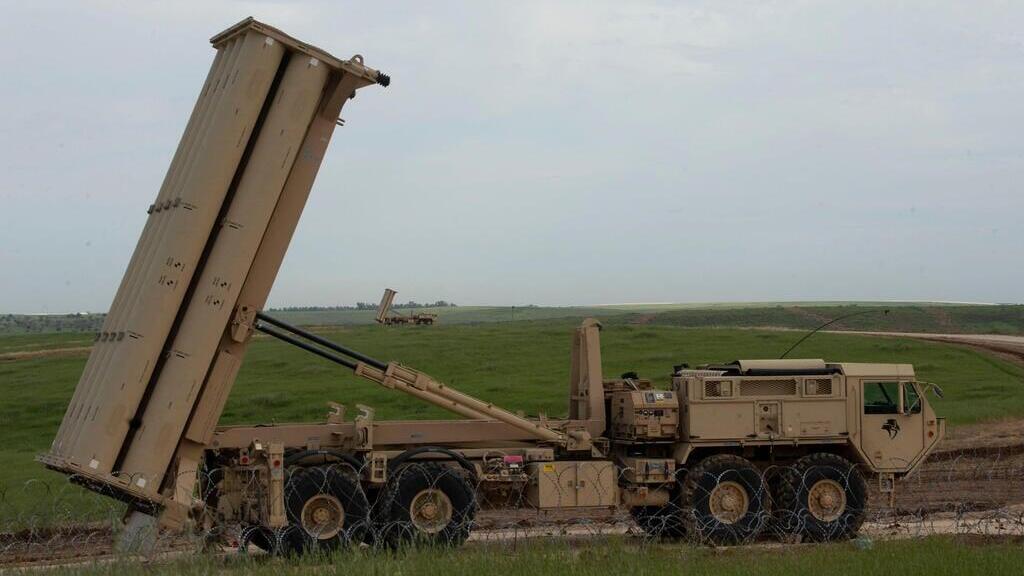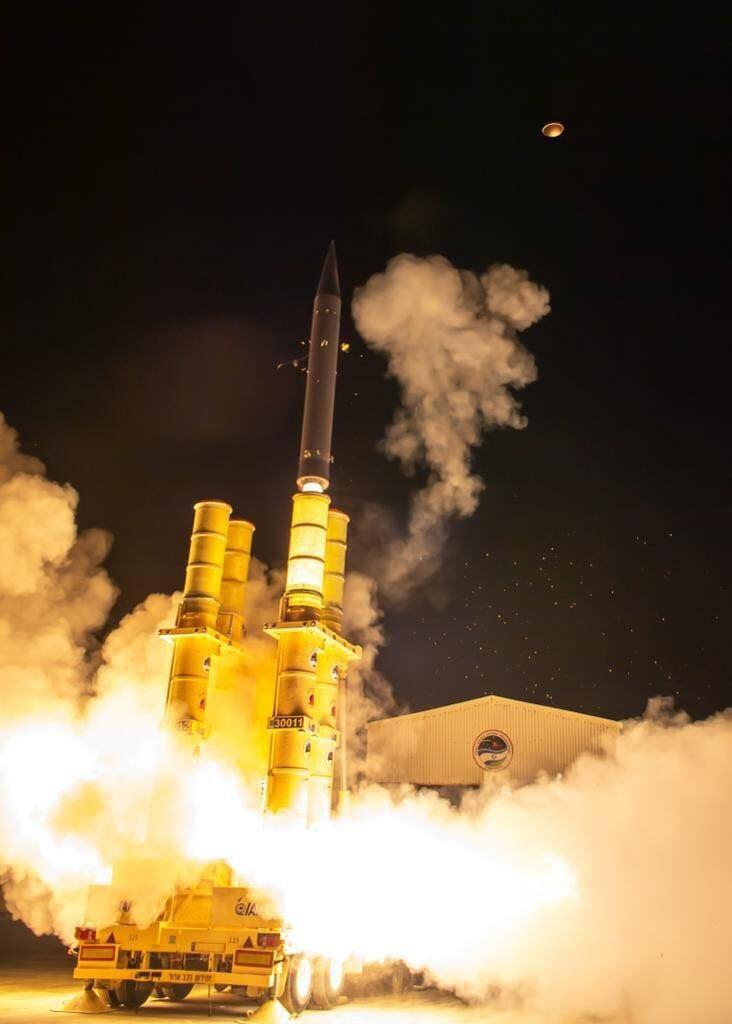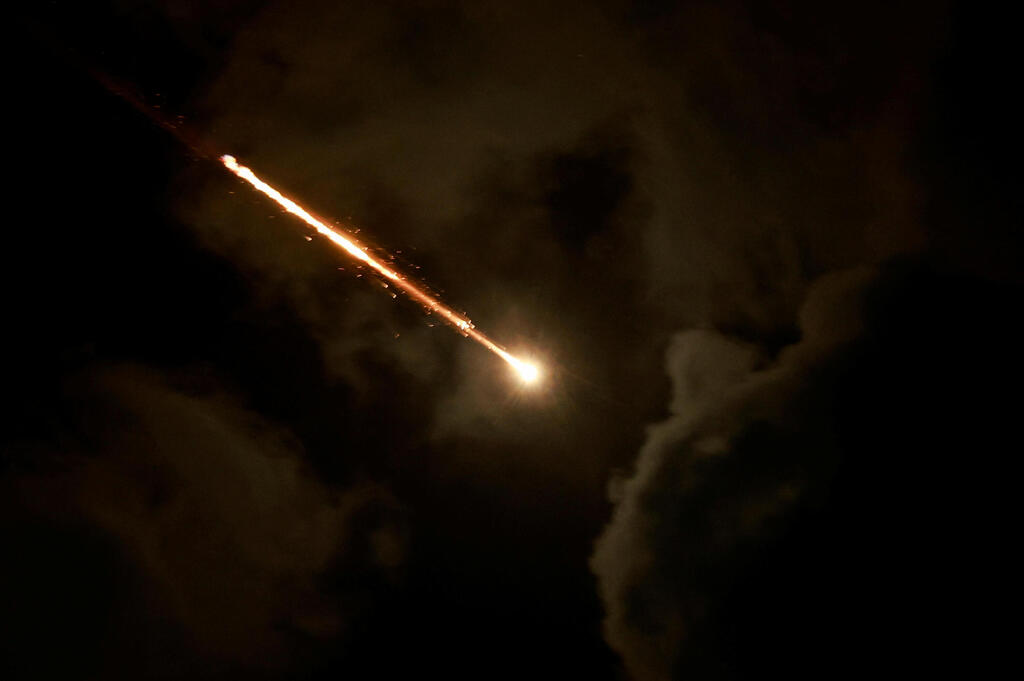Getting your Trinity Audio player ready...
A report on Monday in the British Financial Times sheds light on one of the key reasons behind the upcoming deployment of the American THAAD air defense system in Israel: a severe shortage of interceptor missiles. This highlights the ongoing challenge the IDF faces with the availability of various munitions as the war, now in its second year, shows no signs of abating.
The THAAD system, which will be operated in Israel by around 100 U.S. troops, is expected to integrate with Israel's existing air defense units to help manage additional barrages of ballistic missiles, potentially more extensive than those launched at Israel so far by Iran.
It will complement Israel’s Arrow 2 and Arrow 3 interceptors, as well as the David’s Sling system, which have formed the backbone of Israel's defense against two waves of missile attacks from Iran—one in mid-April and another earlier this month.
During the April attack, Iran launched 185 drones, 110 ballistic missiles and 36 cruise missiles at Israel. Earlier this month, in retaliation for the assassination of Hezbollah leader Hassan Nasrallah, Iran fired another salvo of 181 ballistic missiles at Israel.
While Israel does not disclose its stock of interceptors, including those for the Arrow system and Iron Dome, production times for the Arrow missiles are notably longer than for Iron Dome interceptors, which are primarily used to defend against short-range rockets launched from Gaza and Lebanon. Israel Aerospace Industries (IAI) CEO Boaz Levy hinted this in the Financial Times, saying that missile production is not a matter of days, and It’s no secret that we need to replenish our stockpiles.
Though the THAAD system won’t offer Israel unique capabilities beyond those provided by the Arrow systems, it will serve as a significant reinforcement to Israel’s air defense network, which has been firing dozens of interceptors daily for more than a year against missiles, rockets and drones.
The deployment of the THAAD system comes as the IDF prepares for a potential strike on Iran, following the ballistic missile attack. Israel’s systems successfully intercepted most of the missiles from Iran, but some struck air force bases at Nevatim and Tel Nof, as well as populated areas in central Israel. The Israel Tax Authority estimated the damage to the home front from the Iranian attacks at NIS 150-200 million ($40-55 million).
Working around the clock
The pressure on Israel's defense industries to ramp up production of intercept missiles is likely to intensify as the conflict with Hezbollah escalates, with the group launching more extensive rocket and missile barrages at Israel. Hezbollah has been recovering from the series of blows delivered by Israel over the past month, which significantly impacted its missile and rocket arsenal, as well as its command and control capabilities. This recovery has been evident in the pace and scope of its attacks on numerous northern Israeli communities, including regular strikes on Haifa and the surrounding areas.
Despite Israeli airstrikes that have destroyed parts of Hezbollah’s arsenal, the group still has a large stockpile of missiles and rockets that could heighten the need for more interceptors. Since the war began, Israel’s defense industries have been operating in emergency mode, with some production lines running 24/7 to supply the IDF with weapons and munitions, including intercept missiles.
At the same time, Israel's defense companies must continue producing for foreign clients, including militaries involved in an ongoing arms race, fueled in part by the war between Russia and Ukraine. These foreign production obligations stem from contracts signed before the war in Israel, with predetermined delivery dates. Any delays could result in heavy penalties for Israeli companies.
Alongside the challenge of increased production demands, the defense industries face mounting difficulties in sourcing raw materials from abroad. Israel has encountered a growing reluctance from some countries to supply key materials, including specialized metals and electronic components, resulting in a de facto embargo from several European suppliers.
In response to these shortages, Israeli defense companies have been forced to develop in-house solutions. For example, IAI recently opened a new plant in Ofakim to produce components that were previously imported from abroad, a move that incurs additional costs and time at a moment when both are in short supply.
A war that won't end
The war that erupted on October 7 in southern Israel has now shifted its focus to the northern front, where there is constant concern about a wider direct conflict with Iran. This is Israel’s longest continuous military campaign. Historically, Israel's security doctrine has been predicated on the assumption that any military engagement would be short, lasting less than a month, and decisively won through overwhelming force.
This belief has shaped the stockpiling of munitions in preparation for war. The reserves are designed to provide enough resources for a brief, strategically targeted conflict, not an indefinite war aimed at achieving an ambiguous vision of "total victory."
Get the Ynetnews app on your smartphone:





